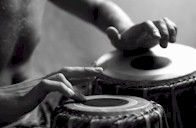
There may be those who consider the tribalistic proclivities of business or law enforcement personnel laughable throwbacks, found mainly among people far more conformist and traditional than themselves.
People involved in the arts and letters, for example, frequently regard themselves as more advanced and individualistic free spirits. But on closer examination, a fair amount of arty and intellectual nonconformity turns out to simply be conformity to the customs of a different tribe.
It can also extend far beyond matters of dress and speech, and pervade the most basic ways in which they perceive other people and their activities. I had an interesting brush with this phenomenon when I developed an online service to help put people in touch with forms of content whose quality can’t easily be assessed by search engines--for example, independent music, art, and writing.
I felt the visual arts in Southern California were especially in need of assistance in this area. Although quite a bit of art is produced here, the area is so spread out that most people don’t even know where the major gallery districts are--let alone a particular gallery that might suit their tastes, or more improbably still, a particular artist whose work they feel speaks to them .
I launched my new service at a time when the economy was teetering on a cliff, and almost no one was buying luxury goods, of which original art is virtually the definition. Galleries and artists alike needed to scramble to reach every potential customer they could. Since my service was free, I expected a strong surge of interest by artists and galleries in getting their offerings listed.
When this failed rather dramatically to materialize, I sought out the opinion of the head of a local artists’ organization. His reactions were eye-opening.
Among other things, he was taken aback by the way my service enabled people to specify that they wanted, say, a large abstract in warm colors with a vertical orientation, and that the service could take them straight to particular subjects that they tended to find themselves drawn to (e.g., bodies of water or the human form). To present “serious art” in this manner, he let it be known, simply was not done.
Never mind that this is the way that most people actually choose what they hang on their walls, or that major artists from Michelangelo to Monet have had no problem creating work to fill a particular space, from frescoes in the Sistine Chapel to flowers decorating doors in the apartment of Monet’s dealer--or that in the teeth of the worst economic downturn since the Great Depression, artists and galleries alike were desperate for patrons. My service’s approach was simply too alien to the mores of the artistic “tribe.”
What I found even more revealing of the tribal mentality was a suggestion this local arts figure made to improve my service’s credibility in artists’ eyes. Instead of providing the service as a for-profit company, he said, I should file for nonprofit status. It didn’t matter to him that I had no intention of exploiting anyone in any way, or that I had never envisioned a significant revenue stream in the art market for my service in any case. (The closest thing I had to a commercial motivation in art was to draw some favorable attention to the strengths of the service by using it to help a struggling community.) In the eyes of the local arts community, if the name of my service ended in “Inc.,” it would forever be “other,” and viewed with commensurate wariness and suspicion.
What made all this especially bizarre is that I’m a painter myself. I do abstracts as well as representational art, I’ve sold my work and won awards in art fairs, and I’ve had pieces accepted in small but respectable galleries. But I’ve never come across in a particularly “arty” way to begin with; and in this instance, I was also linked to a business entity involved with technology. The combination was enough to send the tribal intruder-alert system into code red status.


